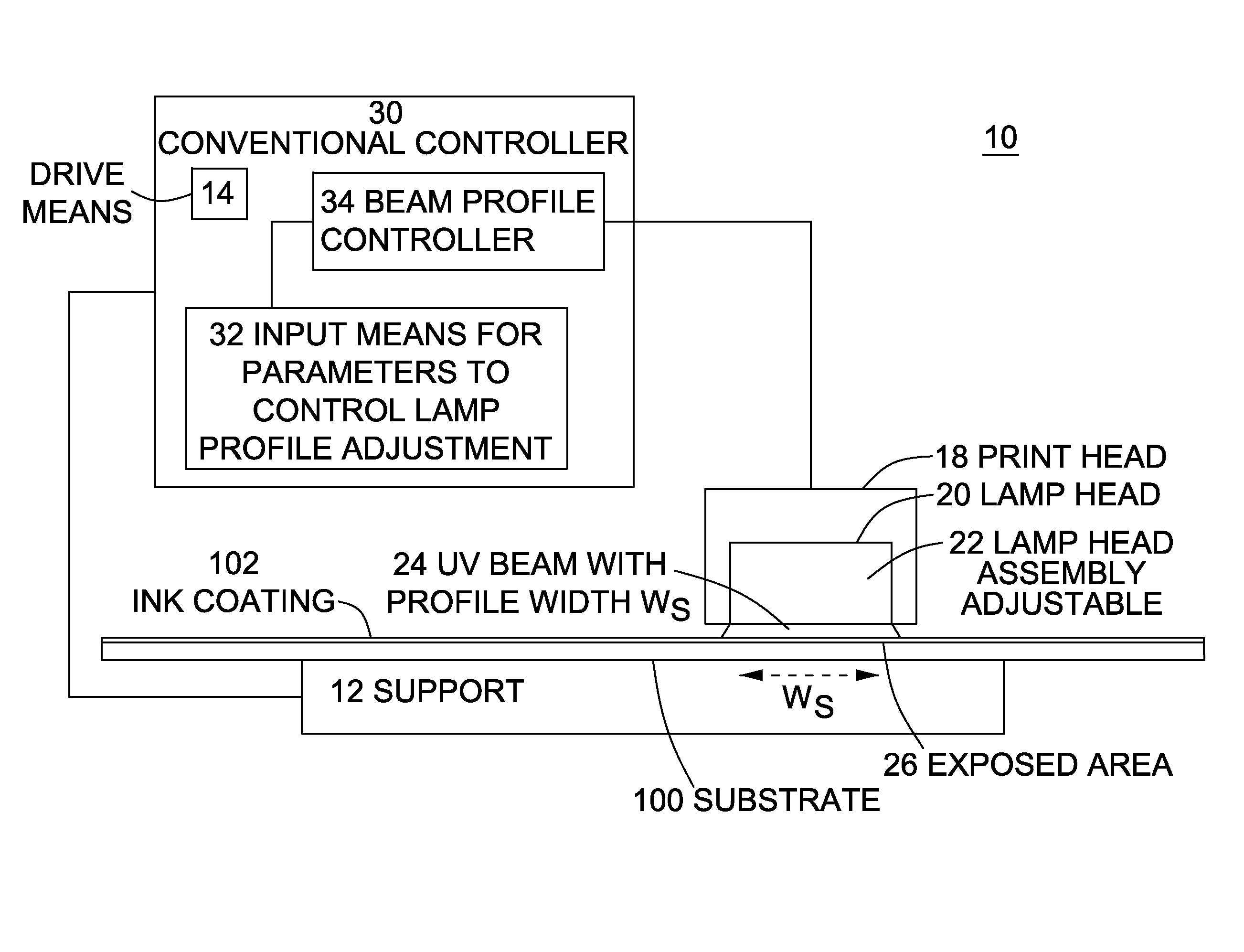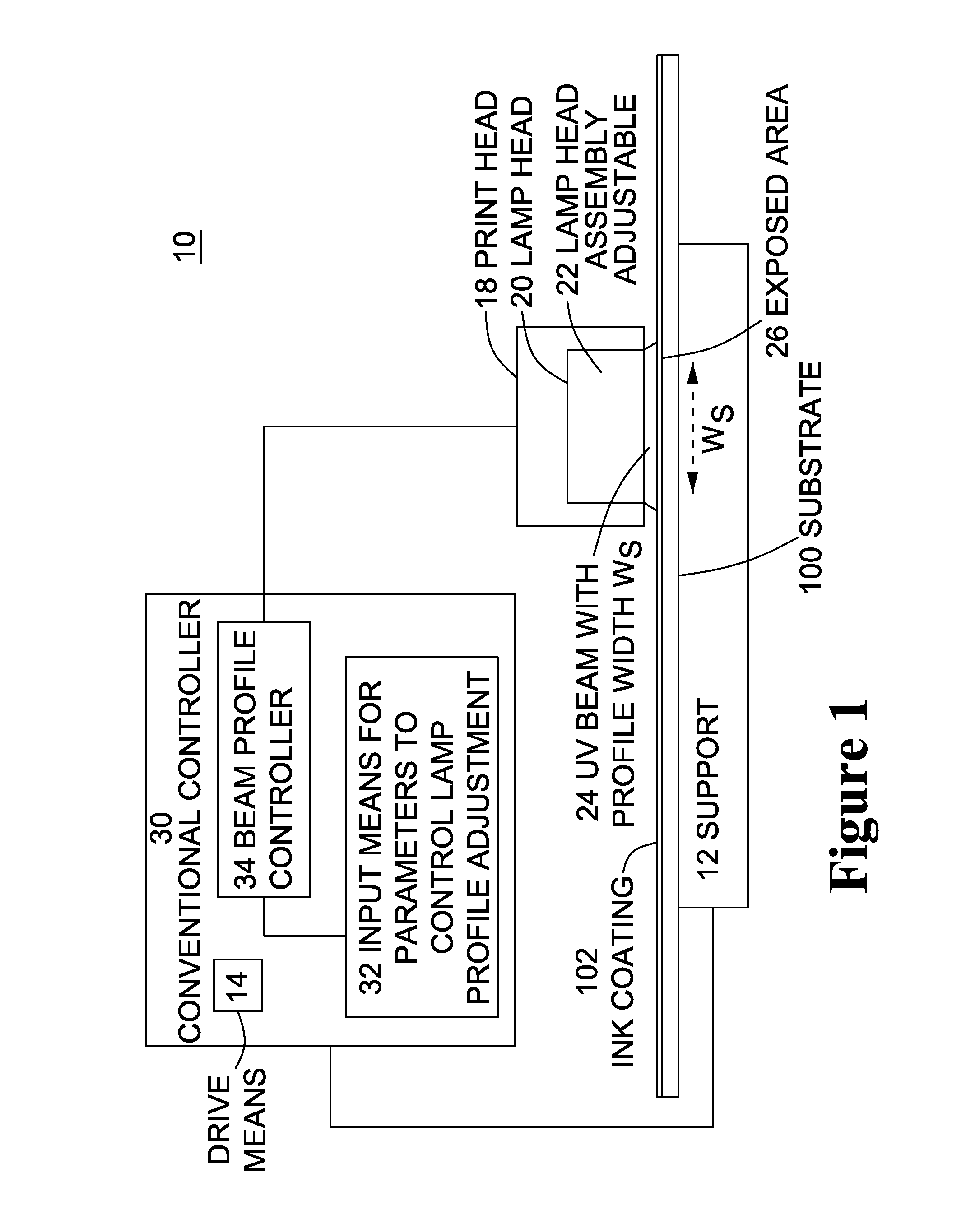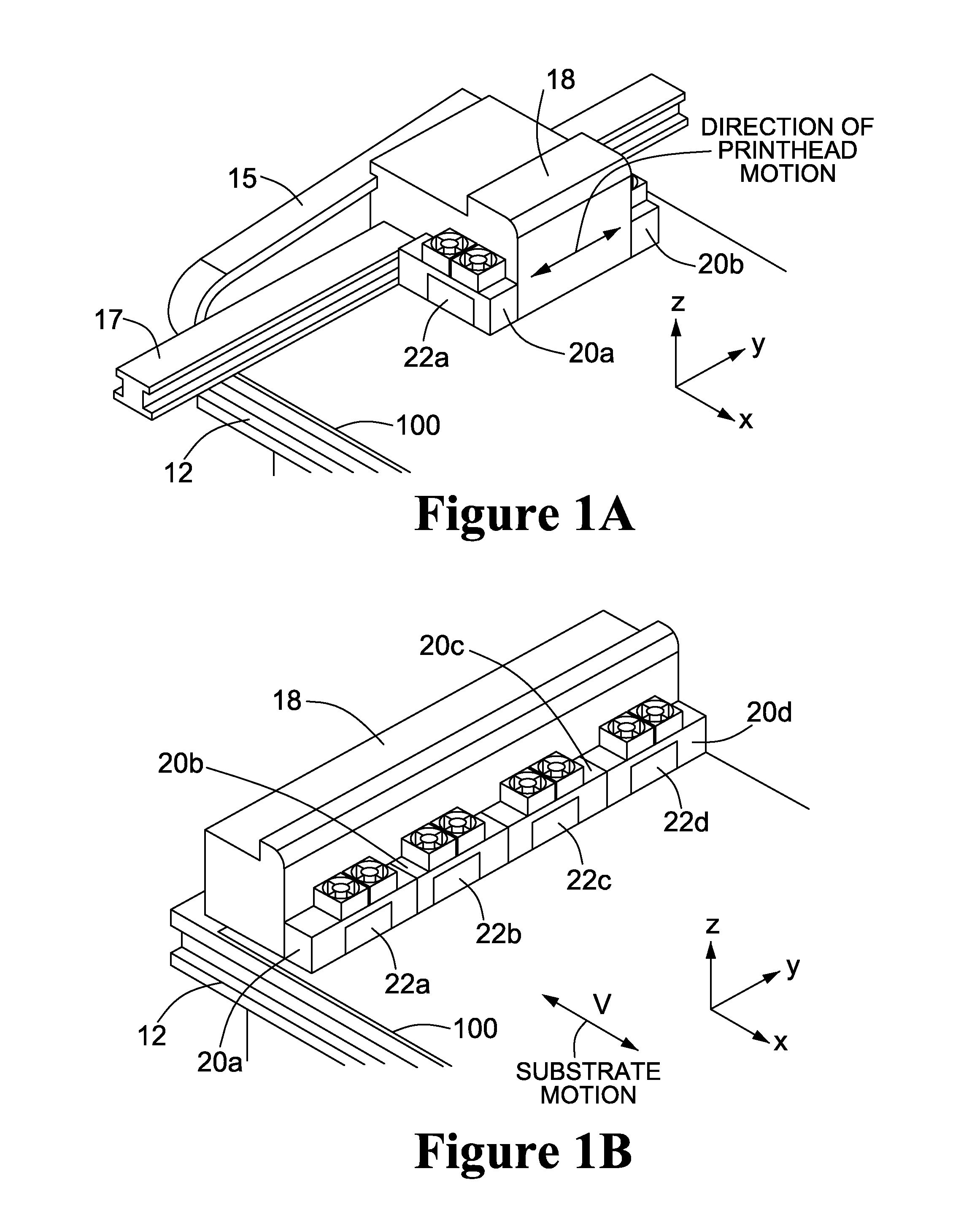However, at higher print speeds, problems with inconsistency in print quality and poor curing efficiency may be encountered.
The general process starts from light being absorbed by photo-initiators to create free radicals, which are required to initialize
polymerization of monomers in the ink formulation, which causes an increase of
viscosity.
Unfortunately, increasing power input does not necessarily solve the problems of poor or inconsistent print quality.
This leaves little room for further improvement in the amount of UV
irradiation with unit amount of input electrical power.
Manufacturing environments do not typically provide an
oxygen free environment during the curing process (in view of expense), and therefore
oxygen acts as a barrier to slow down the process.
An illumination time of 10-30 ms is not usually long enough for free radicals to consume
oxygen because of the inherent reaction rates.
Such limitation requires the industry to use even larger numbers of scans to achieve acceptable curing result.
This does not satisfy the current and upcoming needs for higher productivity.
In practice, surface curing by intermediate or low level of UV
radiation is found to be less effective than use of a higher level of UV
radiation.
In many cases, a beam of this profile, providing diffuse
lower intensity radiation at the
leading edge of the
light source actually extends the region of light below the threshold for initiating curing, and thus wastes light and results in poor print quality.
Also, for many UV curing applications in
digital printing, particularly wide format
inkjet printing, a very large lamp width having an extended reflector such as taught in U.S. Pat. No. 3,983,039 is not suitable because of space limitations for lamp heads in existing printers.
The
landmark study by Dr. S. Jonsson, “Secrets of the Dark”, confirmed that increasing intensity 20 times increased the maximum
polymerization rate by only about 50%, which indicates that using extremely
high intensity to increase polymerization rate is not a very efficient way of utilizing light.
In addition, to achieve extremely
high intensity, the beam must be focused so that the optical profile in a lateral direction of such systems is narrow, allowing for only extremely short illumination time in high speed
processing.
Short illumination times are problematic because there is a minimum period of
exposure needed to consume residual and diffused oxygen before curing proceeds.
At
ultra fast process speeds, such a narrow optical profile does not provide enough illumination time required to overcome
oxygen inhibition, which is required to achieve good cure result.
However, with pressing requirements for higher productivity, the relative speed between the curing
light source and substrate increases.
Traditional approaches to overcoming limited processing time for high speed print, i.e. further increasing
light intensity, fail to resolve the loss of curing efficiency, because illumination with a narrowly focused higher intensity light effectively makes the illumination time even shorter.
This results in low light utilization, and a low system curing efficiency.
Consequently, illumination at extremely high intensity, particularly above a certain
saturation level, and for shorter illumination time, leads to low efficiency of light utilization for photo-polymerization for effective UV curing.
The use of
higher power and higher intensity light sources also interferes with print quality on
temperature sensitive substrates such as PVC, thin films and thermally activated substrates.
This can lead to warping of rigid substrates on flatbed style wide format printers, or shrinkage of flexible substrates.
This will lead to inconsistent print quality when print samples are compared between slower print systems, and higher speed systems.
However, reducing ink deposition limits the print quality.
By increasing the number of passes, it slows the printing process down, because each pass requires time.
As dark curing plays an important part in the
chemical reaction, the time period between each illumination, which varies from printer to printer, may cause inconsistencies in print quality.
In addition, for
high coverage printing, the ink
adhesive and potential
surface finish will be a function of the number of passes—leading to potential print quality inconsistencies from different models of printers, or from the same printer if the print
carriage speed is changed.
 Login to View More
Login to View More  Login to View More
Login to View More 


